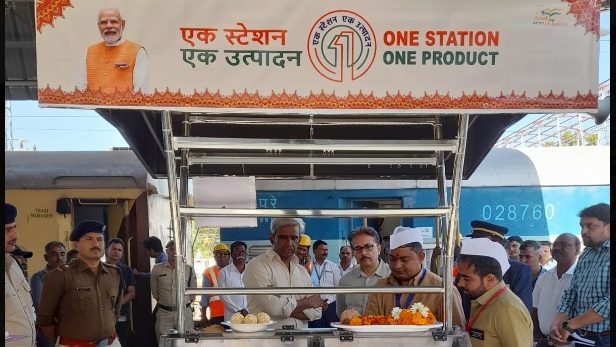In an era driven by technological leaps, it’s crucial to recognise the rich tapestry of traditional craftsmanship woven by tribal communities. Providing a platform for these talented artisans not only preserves cultural heritage but also empowers them to delineate their unique crafts and products to a global audience.
In Union Budget 2022-23, this moment came with the announcement of the ‘One Station One Product’.
Let us delve into the significance of offering a stage for indigenous people, exploring the symbiotic relationship between cultural preservation and economic empowerment and how the scheme has fared till now.
The impact of OSOPs
Launched to promote the ‘Vocal for Local’, the ‘One Station One Product’ (OSOP) has generated additional income opportunities for the marginalised sections of society.
As of November 2023, a total of 1,189 OSOP outlets are operational at 1,083 railway stations. These outlets have been allotted to the local beneficiaries which inter-alia include 184 Artisans, 630 Craftsmen, 147 Weavers, and 202 Agricultural/Forest product producers among others.
Besides, a total of 41,280 direct beneficiaries have availed of the opportunities being offered under the OSOP scheme, as of November 30, 2023.
With the continuous endeavour of Indian Railways, the development of stations and provision of passenger amenities including the provision of OSOP outlets are generally funded under Plan Head – 53 ‘Customer Amenities’.
The scheme has provided enhanced opportunities for livelihood to local artisans, potters, weavers /handloom weavers, and craftsmen among others, through the provision of sale outlets at railway stations across India.
Understanding OSOP
Started as a pilot project in March 2022, the ‘One Station One Product’ initiative by the Indian Railways provides uniquely designed sale outlets for locals to sell indigenous products.
These stall/ kiosk/ sale outlets at identified railway stations for the sale and promotion of items sourced from local manufacturers improve their skills and livelihood.
These products include artefacts made by indigenous tribes, handlooms by local weavers, handicrafts like world-famous wood carving, and other processed/semi-processed food items among others.
The gumption, designed by the National Institute of Design (NID) Ahmedabad, enables distinctive outlets with high visibility to indigenous products, benefiting local craftsmen.
The rich products of Indian heritage
‘One Station One Product’ is specific to that place and includes artefacts made by indigenous tribes, handlooms by local weavers, handicrafts like world-famous wood carving, chikankari, zari-zardozi work on clothes, spices tea, coffee and other processed products indigenously grown in the area.
For example in North East India, varieties of Assamese pitha, traditional rajbongshi dress, jhapi, Local textile, jute products (cap, Gamocha, doll) can be purchased at OSOP stalls. In Jammu & Kashmir, Kashmiri girda, Kashmiri kahwa and dry fruits are famous. In South India, cashew products, spices, and chinnalapatti handloom sarees draw the attention of passengers. Similarly, embroidery & zari zardozi, coconut halva, locally grown fruits, processed foods, and bandhani are famous in the western part of the country.


